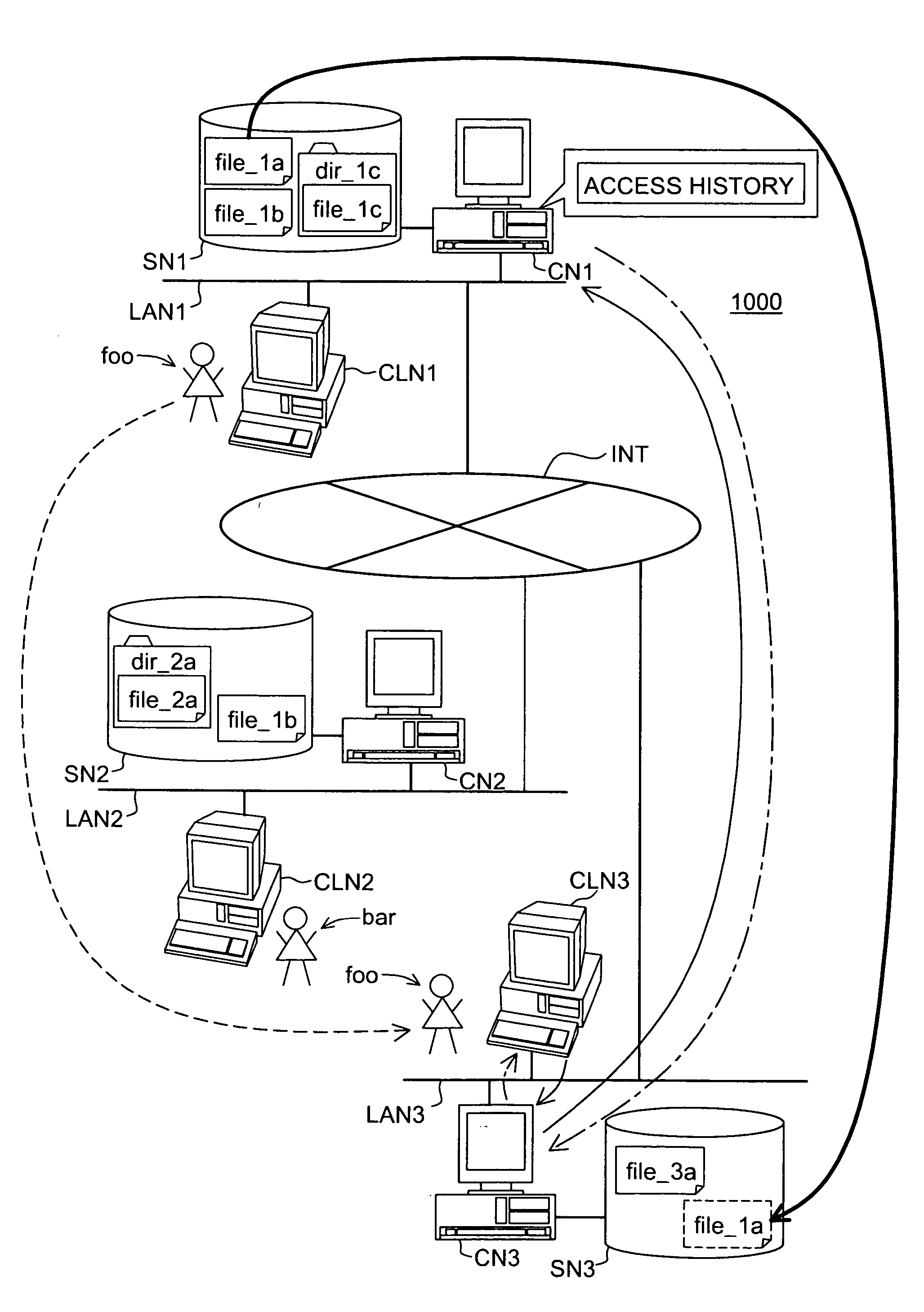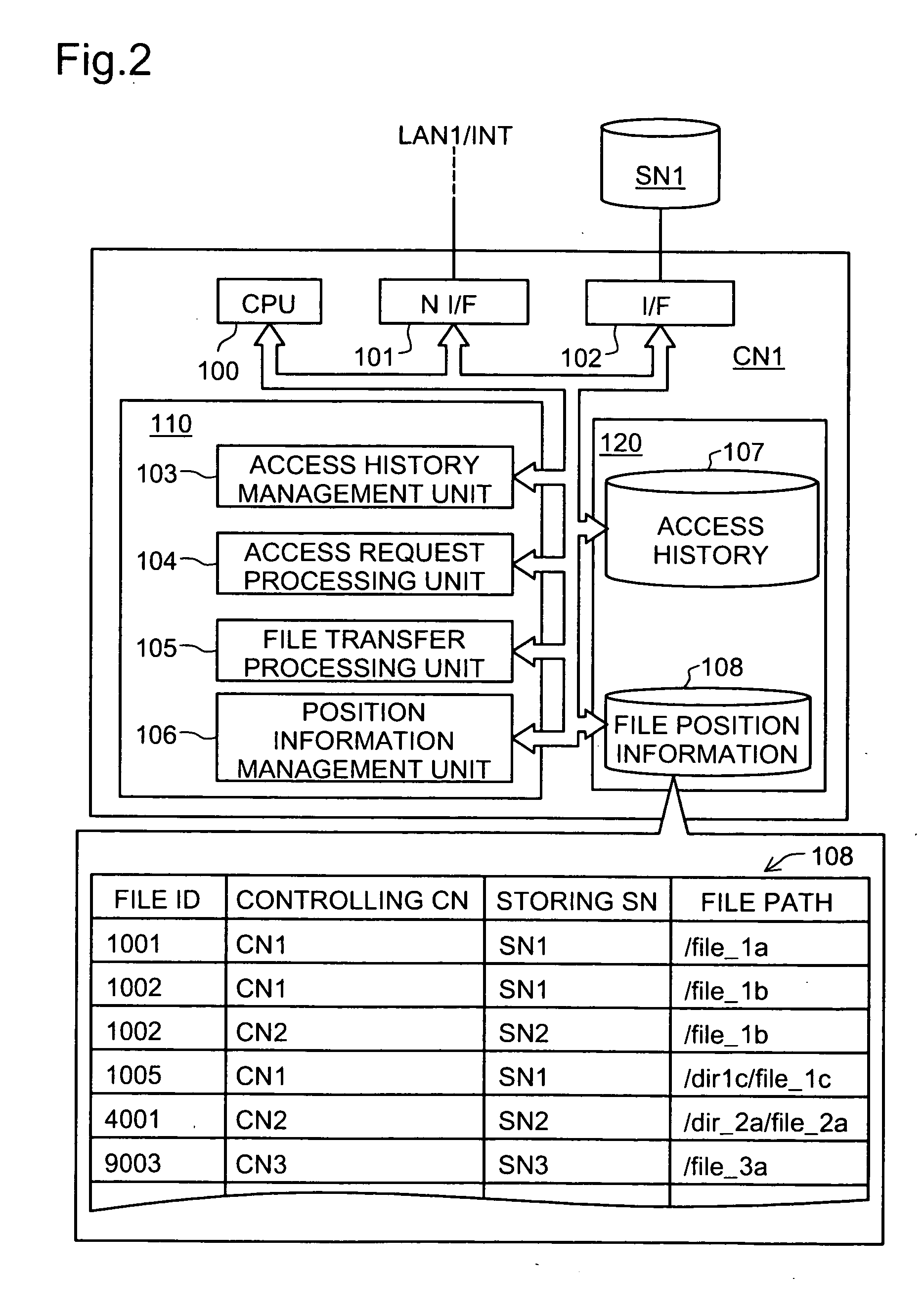File migration method based on access history
a file migration and access history technology, applied in the field of managing information resources, can solve the problems of deteriorating access efficiency and ignoring the difference in access speed, and achieve the effects of improving efficiency, reducing network load, and improving efficiency
- Summary
- Abstract
- Description
- Claims
- Application Information
AI Technical Summary
Benefits of technology
Problems solved by technology
Method used
Image
Examples
first embodiment
A. First Embodiment
A1. General Description of System
[0052]FIG. 1 is a schematic that exemplifies a general structure of a system according to a first embodiment. A computer system 1000 includes three local area networks LAN1, LAN2, and LAN3, which are connected with each other via the Internet INT. A control node CN1 and a client CLN1 are connected with the local area network LAN1, and a storage node SN1 is coupled with the control node CN1. As shown in FIG. 1, the storage node SN1 stores files “file—1a” and “file—1b,” and further stores a file “file—1c” in a directory “dir—1c.” The client CLN1 is used by a user “foo.” Similarly, control nodes CN2 and CN3, and clients CLN2 and CLN3 are connected with the local area networks LAN2 and LAN3 respectively, and storage nodes SN2 and SN3 are coupled with the control nodes CN2 and CN3 respectively. The storage node SN2 stores a file “file—1b,” and further stores a file “file—2a” in a directory “dir—2a.” This file “file—1b” is identical to ...
second embodiment
B. Second Embodiment
[0088] In the first embodiment, the control node manages the access history for accesses to itself, and performs the file migration or replication process based on the access history. In a second embodiment, an access history manager is provided that integrally manages an access history for all accesses to control nodes on the network and instructs a control node to acquire a file based on the access history.
B1. General Description of System
[0089]FIG. 9 is a schematic that exemplifies a general structure of a system according to the second embodiment. A computer system 2000 includes three local area networks LAN1, LAN2, and LAN3, and the access history manager 200, which are connected with each other via Internet INT. The control nodes CN1 through CN3 and the clients CLN1 through CLN3 respectively connected with the local area networks LAN1 through LAN3, and the storage nodes SN1 through SN3 coupled with the respective control nodes are configured in the same m...
PUM
 Login to View More
Login to View More Abstract
Description
Claims
Application Information
 Login to View More
Login to View More - R&D
- Intellectual Property
- Life Sciences
- Materials
- Tech Scout
- Unparalleled Data Quality
- Higher Quality Content
- 60% Fewer Hallucinations
Browse by: Latest US Patents, China's latest patents, Technical Efficacy Thesaurus, Application Domain, Technology Topic, Popular Technical Reports.
© 2025 PatSnap. All rights reserved.Legal|Privacy policy|Modern Slavery Act Transparency Statement|Sitemap|About US| Contact US: help@patsnap.com



